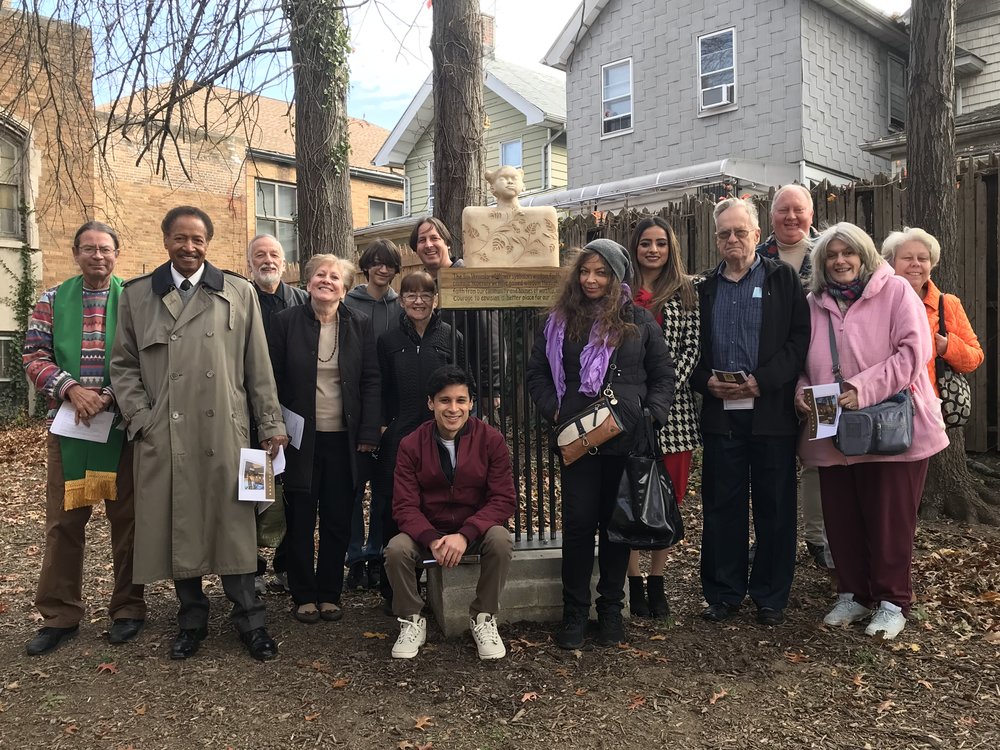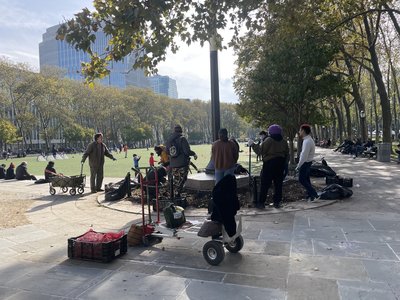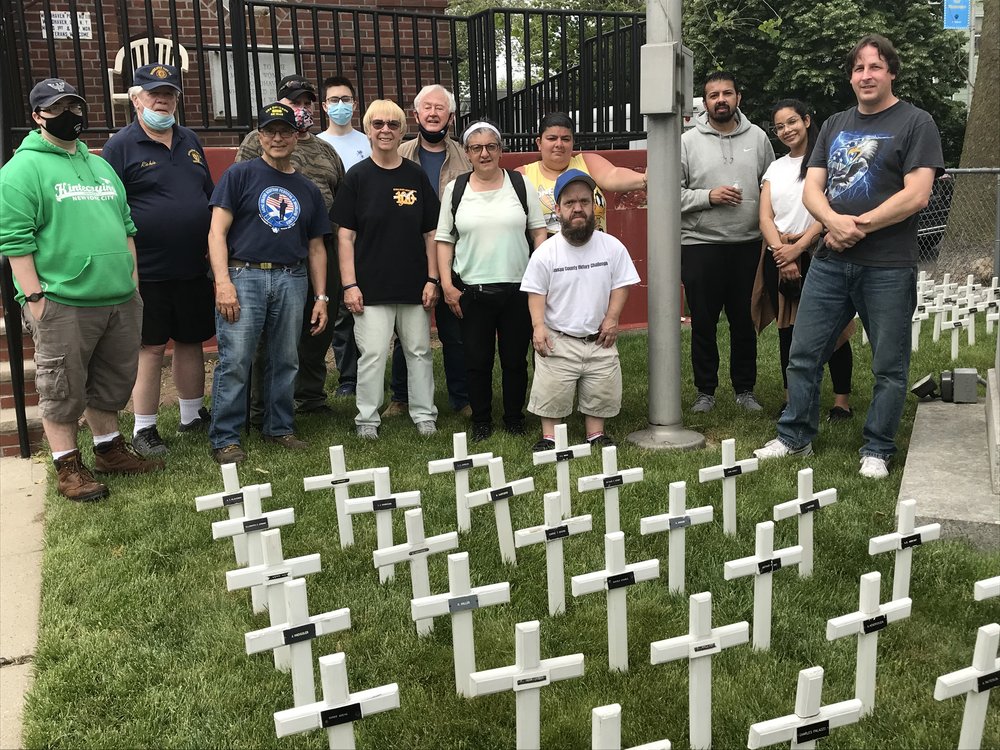By Michael Perlman
mpearlman@queensledger.com
Since last fall, the Tea Garden, nestled behind an ornate gate bearing Forest Hills Gardens’ logo on Greenway Terrace, and accessible through Jade Eatery’s party room, has been subject to a series of fundraising history tours, led by this columnist.
 Over a week ago, the Tea Garden Restoration Committee, comprised of industry professionals including an architect and designers, local residents, and Jade owner Kumar, toured this long-forgotten treasure, where architectural and landscaping features meriting restoration and replication were pinpointed.
Over a week ago, the Tea Garden Restoration Committee, comprised of industry professionals including an architect and designers, local residents, and Jade owner Kumar, toured this long-forgotten treasure, where architectural and landscaping features meriting restoration and replication were pinpointed.
Step back to May 1912… The iconic Tudor-style Forest Hills Inn once featured several elegant social spaces including a Tea Garden designed by Forest Hills Gardens principal architect Grosvenor Atterbury, in partnership with the prominent landscape architect Frederick Law Olmsted, Jr. An August 1923 ad read, “an excellently appointed American Plan Hotel, catering to a discriminating transient and permanent clientele.”
It also referenced “exquisite cuisine, most attractive rates, dining room accommodations for motorists, and afternoon tea in the English Tea Garden.”
The Windsor Room, which was the inn’s main dining area, is today known as Jade Eatery, and the Tea Room which overlooked the Tea Garden, would later become the Terrace Room, adorned with murals for private dining, prior to becoming a commercial space.
Since October, a fundraiser has been underway, where the community is purchasing diverse high-quality jigsaw puzzles, donated by Ronald Gentile followed by Julie Marie, and continue to be available at $25. This will finance small yet very meaningful restoration projects, to enable the community to participate as visionaries. One such project is the replication of an 11-foot moderately ornate “Ring For Tea” stand, complete with an antique bell and cord, and a hand-painted sign bearing a teacup logo to be produced by Noble Signs. The stand is already in production by Flushing Iron Weld and principal Nelson Santander, after this columnist discovered a postcard depicting rocking chairs in front of the stand. Committee member Bea Hunt drafted the initial blueprint by applying her engineering skills.
Nature caused the monumental trees to flourish and produce a natural Gothic archway, but cast a toll on decorative features. The cascading fountain and pool amidst an arched wall that featured iguana sculptures high above have vanished. Turtles once swam below, and rocks and colorful rhododendrons were alongside the perimeters. The “Ring For Tea” stand and rocking chairs were replaced with tables and umbrellas but also vanished. Later additions include a no longer operational tiered central brick fountain and cracked flagstone and a rusty pergola. The original series of graceful pergolas featured colorful floral planting areas. However, after moments of exploration, the magic of what was and could be resurrected becomes evident.

In 1967, the Forest Hills Inn underwent conversion into apartments and is a co-op since the 1980s. In 1977, the U.S. Open relocated from the Forest Hills Tennis Stadium to Flushing Meadows, and with the change of inn’s occupancy and fewer celebrities, the Tea Garden was gradually forgotten.
The Tea Garden occasionally became the town center for community-wide events, such as a stop for the annual 4th of July Festival. In 1915, a local publication read, “Ice cream and cake was served all the children in the Tea Garden, and in the evening a pre-Revolutionary pageant was followed by dancing in the Station Square to the music of the 7th Regiment Band.”
Dogs even felt at home in the Tea Garden, such as on a Saturday afternoon fete for Boston Terriers. In July 1915, The New York Sun stated, “It will be in the nature of a classified match for trophies and ribbons, with Vinton Breese as a judge. The unclassified specials are the judge’s cup, for best bred by exhibitor; Inn cup, for best in the show; Cord Meyer cup, for best of the opposite sex to Inn cup winner, and trophies from Mrs. A.S. Whitesell for the best local dog and the best dog from NYC.” There were over 100 entries, with a very large crowd of spectators.
“The Gardens Chapter of the Women’s Club of Forest Hills Gardens is to hold a flower show at the Forest Hills Tea Garden, Wednesday, June 21,” read another early 20th century article. Some proceeds benefited the $500 playground fund. Another special event was a Strawberry Festival held by the St. Luke’s Women’s Guild on June 10, 1922, from 2 to 6 PM. Homemade ice cream was served with strawberries, as well as lemonade, and garden hats were sold. The Tea Garden also hosted early productions by The Garden Players, such as “Prunella” in 1921, prioritizing its natural setting. Another was Rostand’s “The Romancers” on June 9, 1916, at 8:15 PM for $1.
The July 12, 1924 edition of The Forest Hills Bulletin read, “The Tea Garden of the Forest Hills Inn is a veritable fairyland when lighted with Japanese lanterns, with the trickling fountain heard in the background, and a new moon shining overhead. There is no more delightful place in Greater New York for one to spend the dinner hour.” Every evening during the warmer months between 6:30 and 9 PM, a delectable dinner was served, to the music of the Inn Trio, featuring selections such as Dvorak’s “Humoresque,” Nevin’s “A Day in Venice,” Godard’s “Canzonetta,” and Albeniz’s “A Night In Seville.” On September 19, 1924, the Forest Hills Choral Club held a reception and dance in honor of its new conductor, Alfred Boyce.
 “The Enchanted Gardens – Coolest and most delightful spot on Long Island” read a 1924 ad featuring couples in elegant attire, dining with tablecloths and dancing under a forested scene. At the time, M. Lawrence Meade was the Forest Hills Inn general manager. Special buffet lunches were served from 12 to 2:30 during tournaments, as the inn had its own tennis courts, accessible through a long-gone landscaped arched entryway from the Tea Garden, predating the Forest Hills Inn Apartments annex at 20 Continental Avenue. The inn was open for dinner daily, and dancing was held on Wednesday and Saturday evenings with no cover charge.
“The Enchanted Gardens – Coolest and most delightful spot on Long Island” read a 1924 ad featuring couples in elegant attire, dining with tablecloths and dancing under a forested scene. At the time, M. Lawrence Meade was the Forest Hills Inn general manager. Special buffet lunches were served from 12 to 2:30 during tournaments, as the inn had its own tennis courts, accessible through a long-gone landscaped arched entryway from the Tea Garden, predating the Forest Hills Inn Apartments annex at 20 Continental Avenue. The inn was open for dinner daily, and dancing was held on Wednesday and Saturday evenings with no cover charge.
In a circa mid-1950s brochure, the Tea Garden was referred to as the Patio-Garden, and its glory continued. It offered “a bubbling fountain, candlelight, large umbrellas, and tall trees” with “violin strings in the spring and summer.”
The Tea Garden was the center stage for ceremonial events. The wedding reception of Luicina Gaiser’s parents, Frederic Harry Gaiser III and Julianne McCaffrey, was held on August 31, 1963, in the Tea Garden and former Garden Room of the Forest Hills Inn. A memoir read, “Were led down the walk about a block to the Garden, where there was an orchestra and tables and trees, and waiters serving tidbits and drinks. Stayed there for about an hour and a half. Fun prevailed. Pictures of wedding party and parents taken.” Luicina reflected, “As a child and to date, it was a lost garden or dreamland. There is a quiet peace that breathes life in this garden, that can’t be stifled by having been forgotten.”
For Eve Galvez, Forest Hills has always been a place that she could call home, and now her wish came true. She feels fortunate for the Tea Garden, a distinctive destination that could once again become a community asset. She said, “The Tea Garden is a beautiful space that has been abandoned for so long, but was once a place that created lasting memories. Our goal is to bring that to the present day with the help of industry professionals and residents. I am excited for this project, and hope to help in any way that I can.”
Francesca Victoria feels it is a stereotype that New Yorkers are always looking towards the future in favor of glass skyscrapers. She explained, “I believe that most are interested in preserving the past, and especially beautiful landscapes within their communities. Seeing so many people come together to stand up for a local landmark, and speak out not just for its preservation, but for its continued use for the community, gives hope for Forest Hills’ future. Most people are familiar with Station Square and the Forest Hills Inn, and I’m sure that most people have peeked behind that gate at least once or twice and wondered what it was and if it has any current use.” She ponders as to how it was once so well-known but is now much forgotten among inhabitants. “I hope this campaign will not only preserve the Tea Garden but spread historical awareness.”
 Project Petals has grown from that one project in Queens, to 10 projects across the five boroughs including the Mill Brook Houses Garden in South Bronx, Bergen Street Garden in Crown Heights, and Paradise Garden in Jamaica.
Project Petals has grown from that one project in Queens, to 10 projects across the five boroughs including the Mill Brook Houses Garden in South Bronx, Bergen Street Garden in Crown Heights, and Paradise Garden in Jamaica. White said that she’s happy to see BIPOC communities benefiting from the efforts of Project Petals, given where the organization is based geographically.
White said that she’s happy to see BIPOC communities benefiting from the efforts of Project Petals, given where the organization is based geographically.
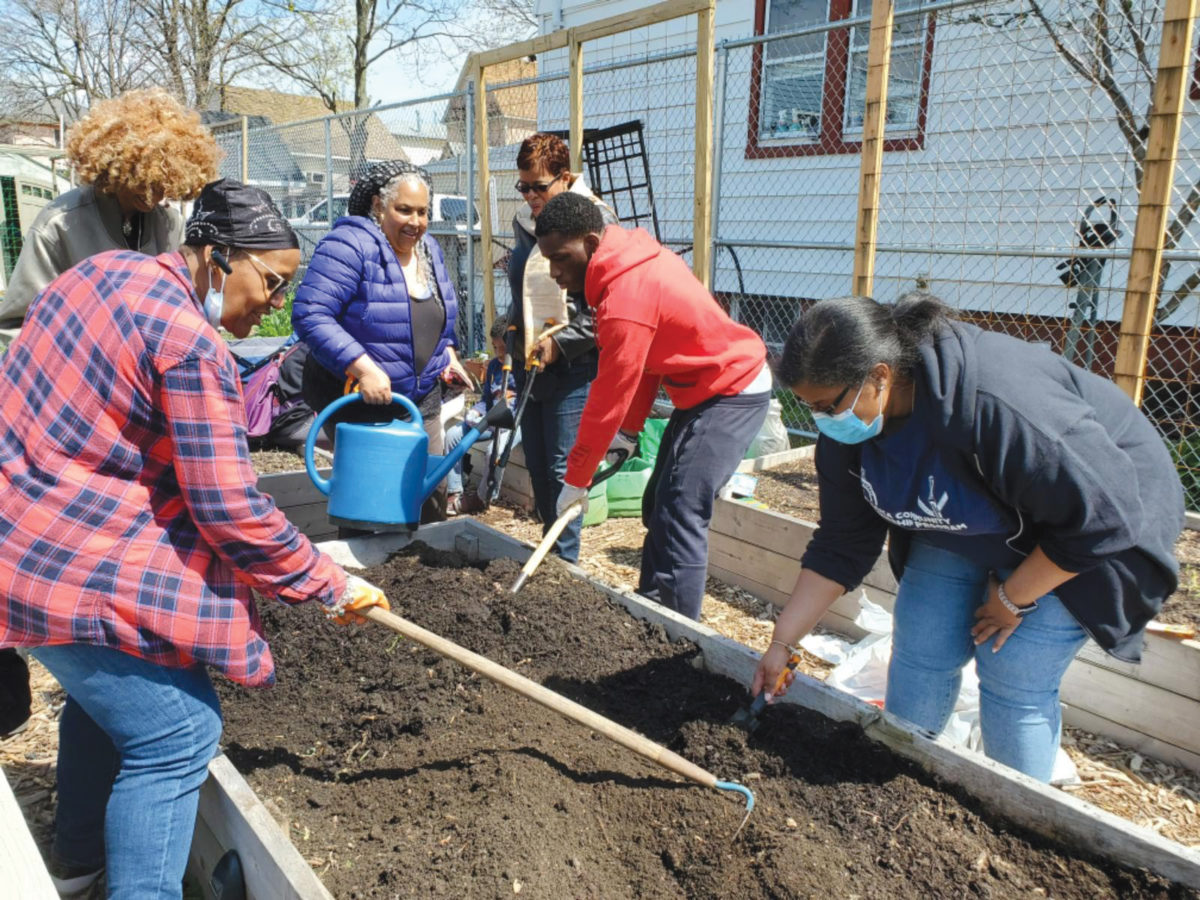
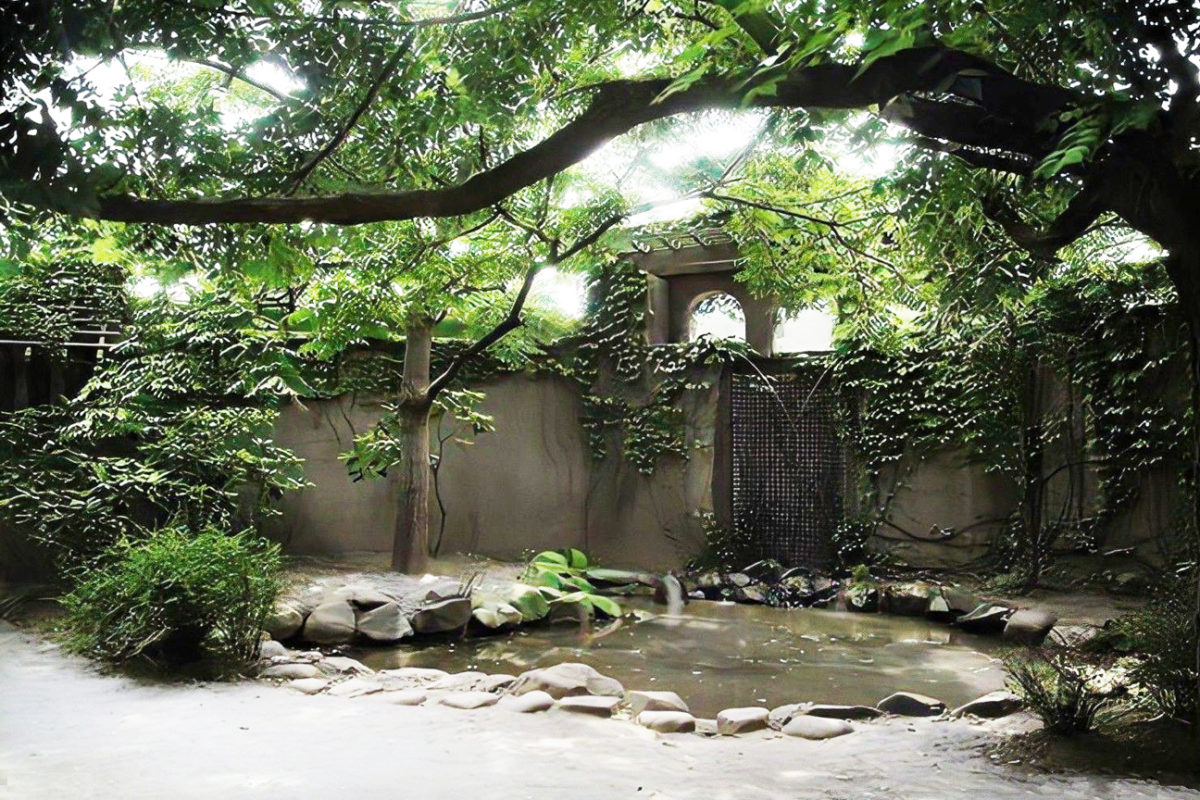


 “The Enchanted Gardens – Coolest and most delightful spot on Long Island” read a 1924 ad featuring couples in elegant attire, dining with tablecloths and dancing under a forested scene. At the time, M. Lawrence Meade was the Forest Hills Inn general manager. Special buffet lunches were served from 12 to 2:30 during tournaments, as the inn had its own tennis courts, accessible through a long-gone landscaped arched entryway from the Tea Garden, predating the Forest Hills Inn Apartments annex at 20 Continental Avenue. The inn was open for dinner daily, and dancing was held on Wednesday and Saturday evenings with no cover charge.
“The Enchanted Gardens – Coolest and most delightful spot on Long Island” read a 1924 ad featuring couples in elegant attire, dining with tablecloths and dancing under a forested scene. At the time, M. Lawrence Meade was the Forest Hills Inn general manager. Special buffet lunches were served from 12 to 2:30 during tournaments, as the inn had its own tennis courts, accessible through a long-gone landscaped arched entryway from the Tea Garden, predating the Forest Hills Inn Apartments annex at 20 Continental Avenue. The inn was open for dinner daily, and dancing was held on Wednesday and Saturday evenings with no cover charge. 